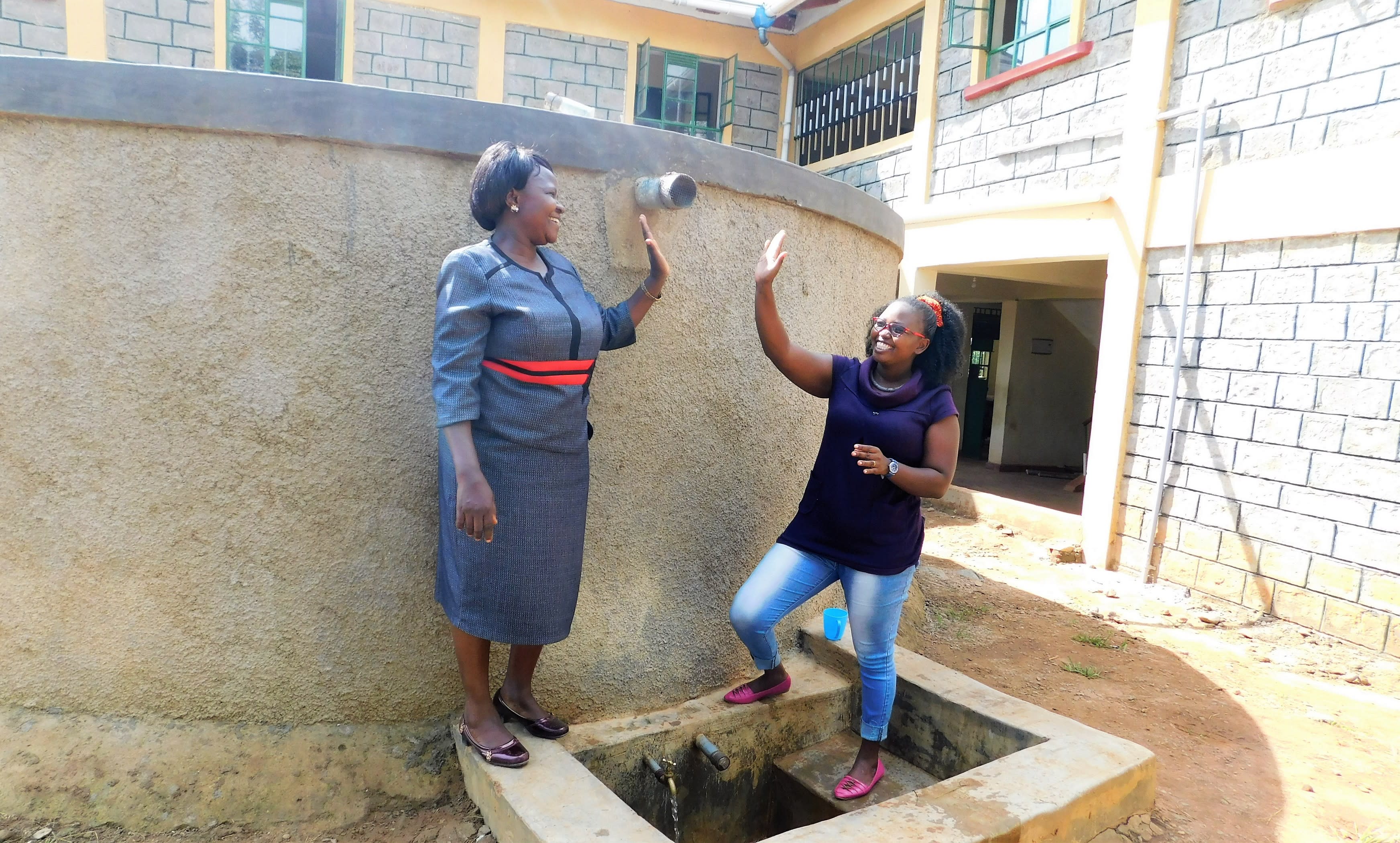Eshisenye Girls Secondary School is located in Kakamega County, Kenya. It currently has 140 students who are taught by 11 teachers. The school also employs seven support staff. It has both day scholars who travel from home every morning and boarders who live there.
Each day at Eshisenye begins with the boarding girls getting up very early to fetch water from the spring for cleaning. The two security guards or the teachers on duty make sure to escort the girls since girls in Kenya encounter lots of danger when out alone.
The community around the school relies on their sugarcane plantations to make a living. In recent days, the sugar industry has been unpredictable, leading to the collapse of the local Mumias Sugar Company. This has actually forced the community members to start replacing the once highly profitable sugarcane with maize.
Water
The girls don't only need water in the early morning for cleaning. They need it throughout the entire school day. Each trip to the water source drains valuable time; it's located two kilometers away. A class is interrupted when the school runs out of the water, and the girls are sent out into the community again. They suffer the most for a quarter of the year during the dry months when community members tighten their grip on their local water source and often turn the girls away without water.
Though the spring is protected and should yield safe water, the girls are carrying open containers. That water needs to make it more than two kilometers down the dusty road without getting contaminated!
"The health status of my students is quite wanting. Water from the spring is not treated, thus causing most students to complain of stomachaches after drinking," Principal Mildred Olwenyo said.
She also added that every time the girls make the long walk to the spring, she sits in her office and prays for their safety.
Sanitation
There are only two blocks of makeshift pit latrines on school grounds. The walls, doors, and roofs are made of iron sheets. Some of the doors are falling off and so the girls will only use those particular pits in an emergency. With so much activity around these latrines during break times, the girls really need reliable facilities that will hold up to this use.
These facilities are dirty because drinking and cooking are the priority uses for water that's fetched from the spring. And before the environment is cleaned, boarders must practice their own personal hygiene.
There are no handwashing stations.
Here's what we're going to do about it:
Training
Training will be held for two days. The facilitator will use PHAST (participatory hygiene and sanitation transformation), ABCD (asset-based community development), CTC (child to child), lectures, group discussions, and handouts to teach health topics and ways to promote good practices within the school. The CTC method will prepare students to lead other students into healthy habits, as well as kickstart a CTC club for the school.
Handwashing Stations
The CTC club will oversee the new facilities, such as handwashing stations, and make sure they are kept clean and in working condition. The two handwashing stations will be delivered to the school, and the club will fill them with water on a daily basis and make sure there is always a cleaning agent such as soap or ash.
VIP Latrines
Two triple-door latrines will be constructed with local materials that the school will help gather. Three doors will serve the girls while the other three serve the boys. And with a new source of water on school grounds, students and staff should have enough to keep these new latrines clean.
Rainwater Catchment Tank
A 50,000-liter rainwater catchment tank will help alleviate the water crisis at this school. The school will also help gather the needed materials such as sand, rocks, and water from the spring for mixing cement. Once finished, this tank can begin catching rainfall that will be used by the school’s students and staff. Girls will no longer have to make the long walk for water.
We and the school strongly believe that with this assistance, standards will significantly improve. These higher standards will translate to better academic performance.
This project is a part of our shared program with Western Water And Sanitation Forum (WEWASAFO). Our team is pleased to provide the reports for this project (edited for readability) thanks to the hard work of our friends in Kenya.

 Rainwater Catchment
Rainwater Catchment
 Rehabilitation Project
Rehabilitation Project

































